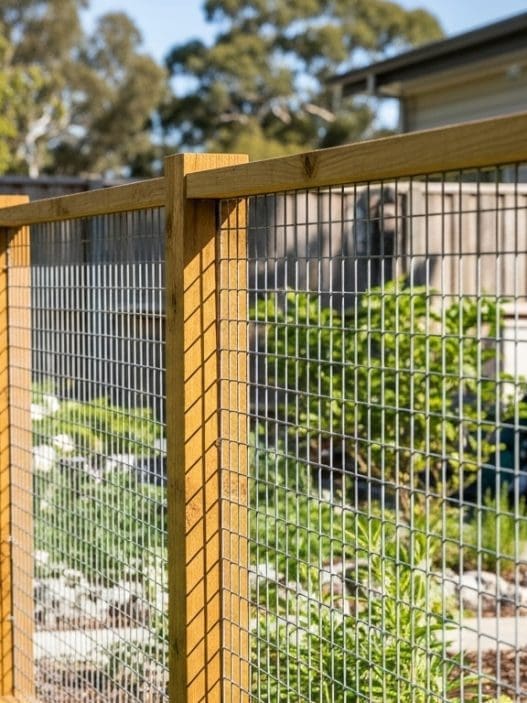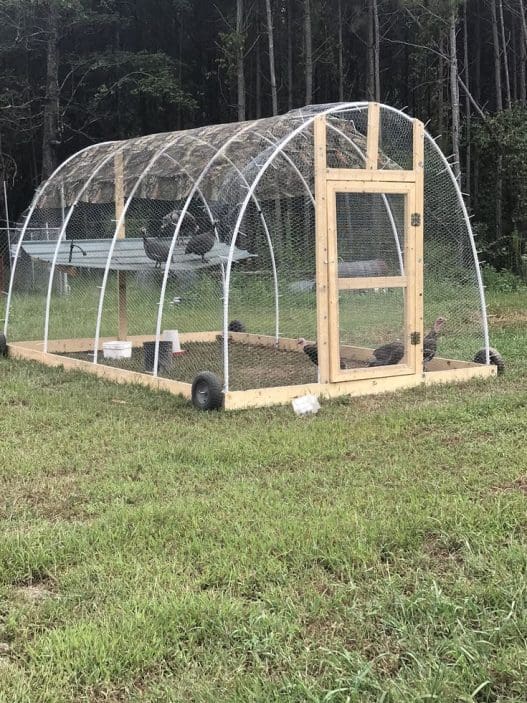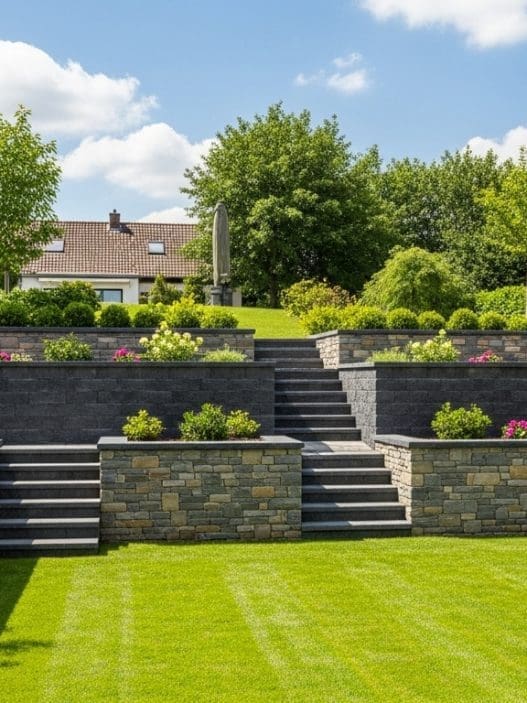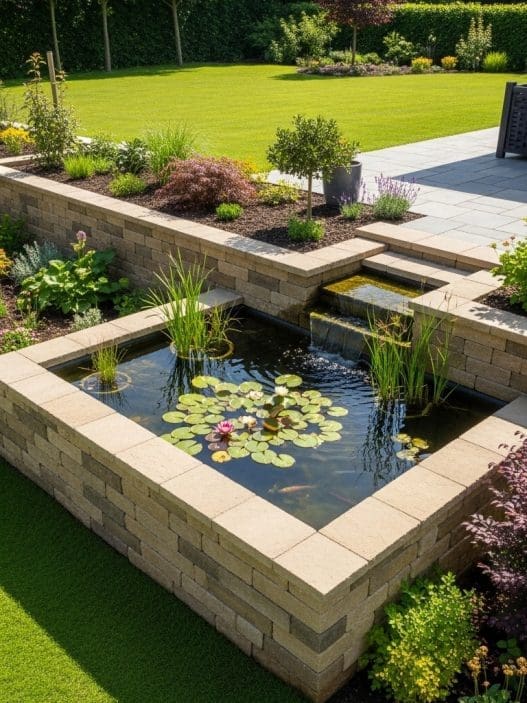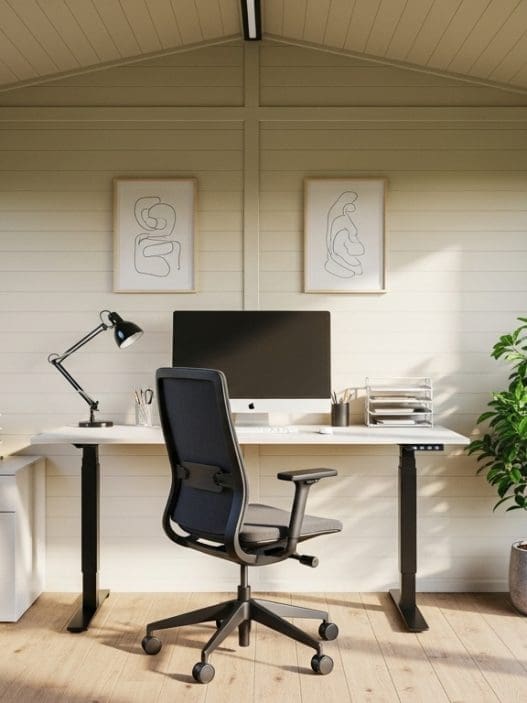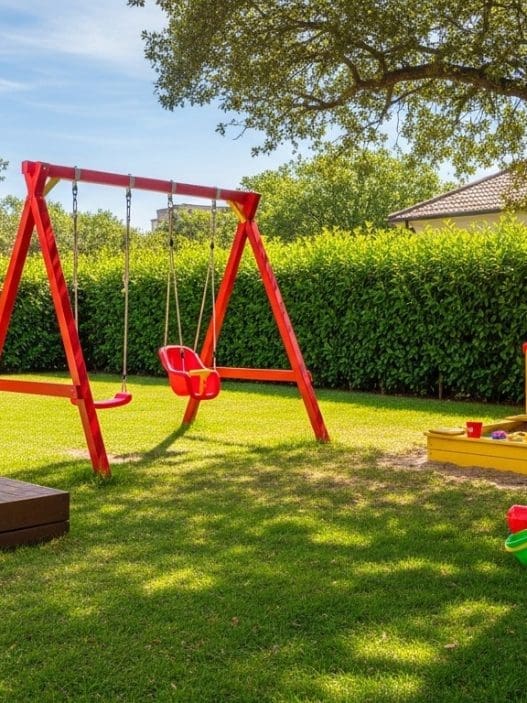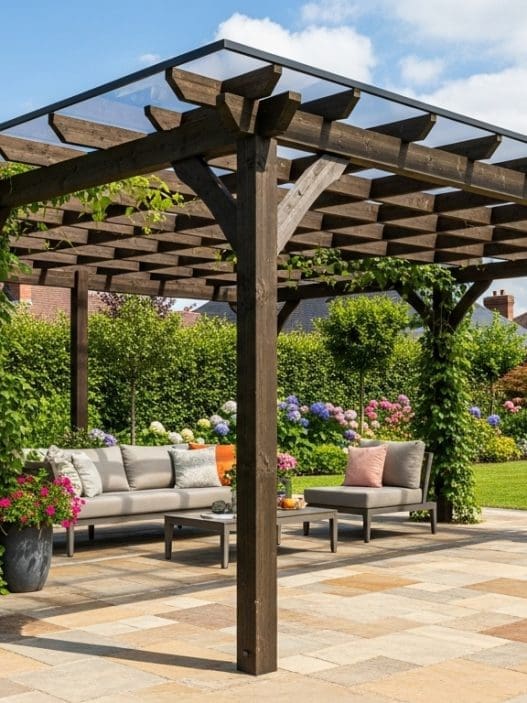In this guide, we’ll share 20 fairy house DIY ideas that rely entirely on natural materials you can find in your backyard, a local park, or while hiking. Each project is beginner-friendly and designed to help you create charming, magical structures that delight children and adults alike. These ideas are perfect for weekend activities, seasonal crafts, or long-term garden décor.
Building a DIY fairy house using natural materials is a fun, creative project that brings together imagination, outdoor exploration, and sustainable crafting. Whether you’re designing for your garden, a child’s play area, or simply to enjoy the calming process of crafting, using organic elements makes each fairy house unique and environmentally friendly.
Disclaimer:
Always consult a medical professional before handling natural materials if you or your children have known allergies or skin sensitivities. We recommend washing your hands after collecting materials and avoiding plants or fungi that are unfamiliar or potentially toxic.
1. Acorn Cap Roof Cottage
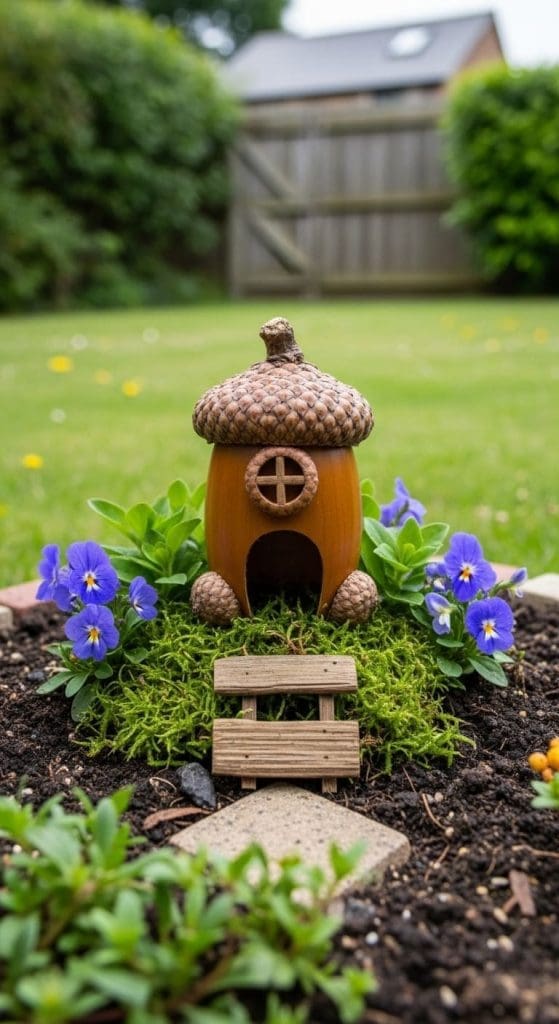
Why this works:
Acorn caps are durable, weather-resistant, and easy to stack or layer, making them ideal for creating textured, realistic roofing. Their natural curvature and earthy color blend seamlessly with outdoor settings. Using acorn caps also encourages sustainability by repurposing fallen materials instead of relying on store-bought supplies. This type of fairy house promotes the use of biodegradable elements, fitting perfectly with eco-friendly crafting trends.
Materials:
- Acorn caps
- Small twigs
- Bark sheet (for walls)
- Non-toxic wood glue
- Flat stone (base)
Instructions:
- Gather a good number of acorn caps in similar sizes.
- Use bark pieces to create the base structure of the house.
- Glue twigs vertically to form a frame for the walls.
- Attach bark sheets to the frame for the walls.
- Begin gluing acorn caps starting from the bottom edge of the roof upward.
- Overlap each row slightly like shingles to keep water out.
2. Bark Wall Hideaway

Why this works:
Tree bark provides a naturally textured, strong surface that mimics rustic walls. Bark also acts as a mild insulator, protecting the inside of the fairy house from sun or rain when placed outdoors. This makes it a reliable material for long-term garden décor. Its neutral tone allows it to blend seamlessly into the environment, making it look like a natural woodland structure.
Materials:
- Bark pieces (preferably from fallen trees)
- Small pebbles
- Moss
- Twigs
- Natural clay or mud
Instructions:
- Clean and dry bark to remove any loose debris or insects.
- Use clay to mold a base that will hold the bark upright.
- Press bark pieces into the clay to form walls.
- Use pebbles and twigs to reinforce the corners.
- Add moss between bark pieces for added insulation and aesthetics.
- Let dry completely before placing outdoors.
3. Pine Cone Tower
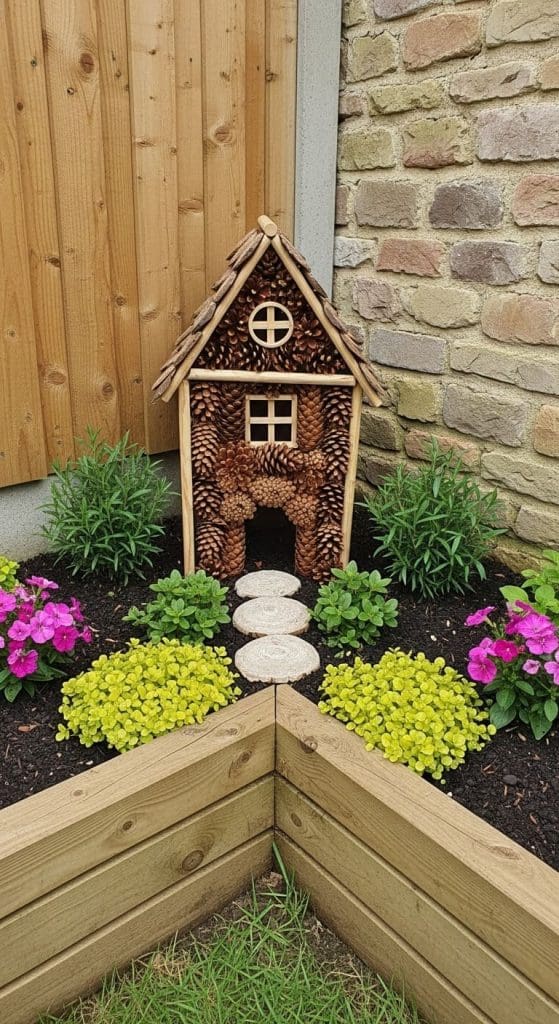
Why this works:
Pine cones are lightweight, textured, and easy to break apart or stack. Their scale-like structure creates a whimsical tower shape that fits well with fairy house aesthetics. Using pine cones also promotes seasonal crafting, especially in autumn when they are readily available. This project is suitable for kids due to the minimal tools needed.
Materials:
- Pine cones
- Twigs
- Flat rock or bark base
- Moss or dried leaves
- Natural glue
Instructions:
- Choose pine cones that are symmetrical and fully opened.
- Break off the bottoms to create a flat base if needed.
- Stack them vertically with glue to form a tower shape.
- Insert twigs through the cone gaps to act as windows or ladders.
- Cover any gaps with moss for a cozy look.
- Glue the tower onto a flat rock or bark base.
4. Moss Dome Cottage
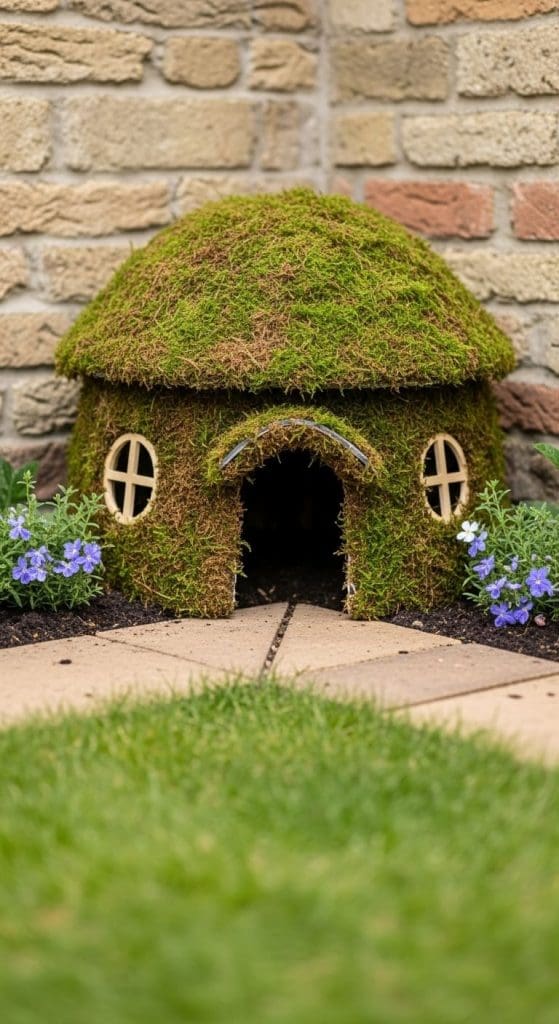
Why this works:
Moss adds softness and a lush green texture to any fairy house. It retains moisture and helps keep the interior cool in warmer weather. Moss also makes structures look instantly magical and lived-in. Using moss in a dome shape makes the structure look like it’s naturally grown from the earth.
Materials:
- Fresh moss
- Willow twigs or bendable vines
- Bark or coconut shell (base)
- Natural string
- Clay
Instructions:
- Bend willow twigs into a dome and secure with string.
- Cover the frame with a thin layer of clay.
- Press moss into the clay, covering all sides.
- Create a door opening in the dome.
- Add small decorations like bark shingles or leaf curtains.
- Mist lightly with water to keep moss fresh.
5. Pebble Path Fairy Home
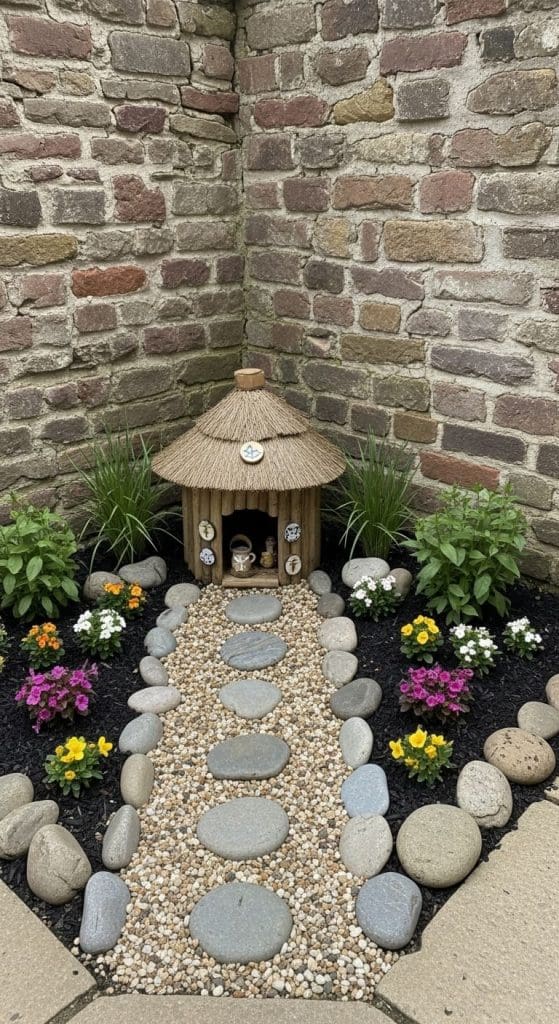
Why this works:
Pebbles provide a strong, weather-resistant surface and make beautiful, textured walls or paths. They are especially useful for creating the illusion of a foundation or permanent structure. The natural variation in pebble color adds character without any need for paint or stain.
Materials:
- Small pebbles
- Natural adhesive or mud
- Bark
- Dried leaves
- Twigs
Instructions:
- Arrange pebbles to outline the base of the house.
- Glue or press pebbles together with mud to form low walls.
- Add bark sheets above the pebble base for taller walls.
- Use twigs to frame doorways and windows.
- Line the outside with dried leaves for added texture.
- Add a pebble path leading up to the door.
6. Walnut Shell Bungalow
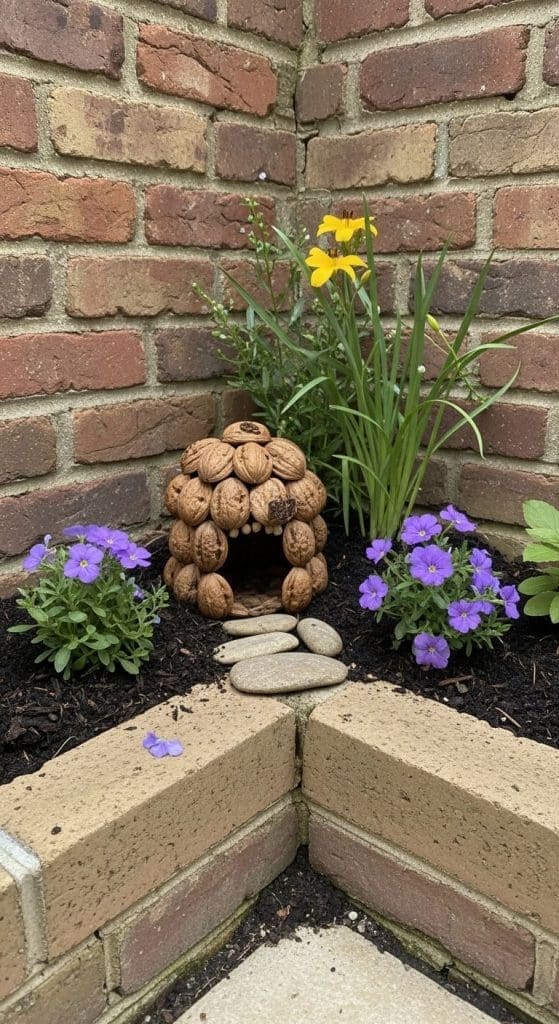
Why this works:
Walnut shells have a natural bowl shape that makes them perfect for miniature house bases or roofs. Their hard outer layer is durable and water-resistant, which helps protect the structure when used outdoors. Their compact size also makes them ideal for creating portable or container garden fairy houses. Using food byproducts like walnut shells adds to the sustainable and zero-waste appeal of this DIY method.
Materials:
- Halved walnut shells
- Twigs
- Moss or lichen
- Small pebbles
- Wood glue or clay
Instructions:
- Clean out walnut shells and dry them completely.
- Use clay or glue to secure the shell upside down on a base.
- Attach twigs vertically around the shell for support.
- Add moss around the bottom edge to cover gaps.
- Use pebbles to form a tiny doorstep or patio.
- Decorate with lichen to mimic vines or plants.
7. Leaf Roof Hut

Why this works:
Dried leaves offer a natural, flexible roofing option that is biodegradable and visually appealing. They resemble thatch when layered, creating a rustic and realistic effect. Leaves can be easily glued or tied into place, making them an accessible material even for younger crafters. This structure promotes nature-based learning through hands-on activity.
Materials:
- Large dried leaves (oak, sycamore, etc.)
- Twigs
- Clay or bark for walls
- Natural string
- Pine needles or grass
Instructions:
- Form a hut frame using twigs and natural string.
- Cover walls with bark or a clay coating.
- Layer dried leaves from bottom to top on the roof.
- Tie or glue each row into place for stability.
- Use pine needles to line the roof peak.
- Add grass or moss trim around the base.
8. Twig Cabin
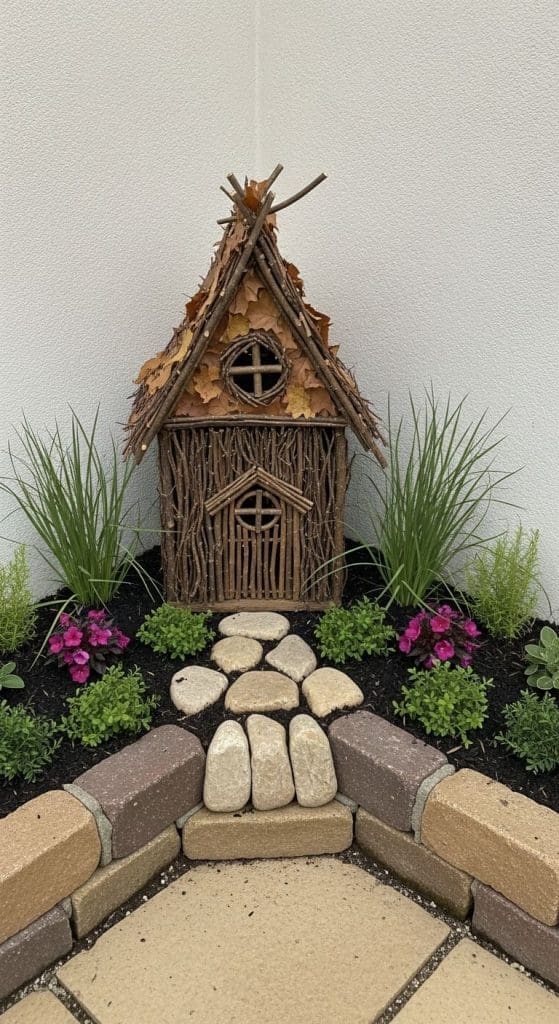
Why this works:
Twigs are one of the most abundant natural materials and provide excellent structural integrity for small-scale models. They mimic logs and timber construction, giving fairy houses a realistic cabin appearance. Twigs also vary in thickness and texture, adding to the visual charm. This method supports outdoor exploration and repurposing yard waste.
Materials:
- Straight twigs (similar thickness)
- Bark (for roof)
- Mud or natural glue
- Flat stone or wood slice (base)
- Small pine cones
Instructions:
- Cut twigs to equal lengths for walls.
- Glue or press twigs into mud to form log-style walls.
- Use bark as a sloped roof and secure it with glue.
- Place pine cones near the entrance as faux shrubs.
- Line the interior with moss for insulation.
- Set the house on a flat rock or wood slice.
9. Stone Slab Shelter Fairy House DIY Ideas

Why this works:
Flat stones are sturdy and offer long-term durability, especially for outdoor use. They resist moisture, insects, and temperature changes, making them an ideal base material. Using natural stone also eliminates the need for synthetic supports. This approach encourages the use of heavier, more permanent materials for garden installations.
Materials:
- Flat stones or slate
- Pebbles
- Mud or clay
- Bark strips
- Twigs
Instructions:
- Choose 3-4 flat stones to form walls.
- Stack and secure them using clay or mud.
- Add twigs inside for structural support.
- Use a larger stone or bark sheet for the roof.
- Fill gaps with pebbles or moss.
- Create a stone path around the house.
10. Gourd Shell Home Fairy House DIY Ideas
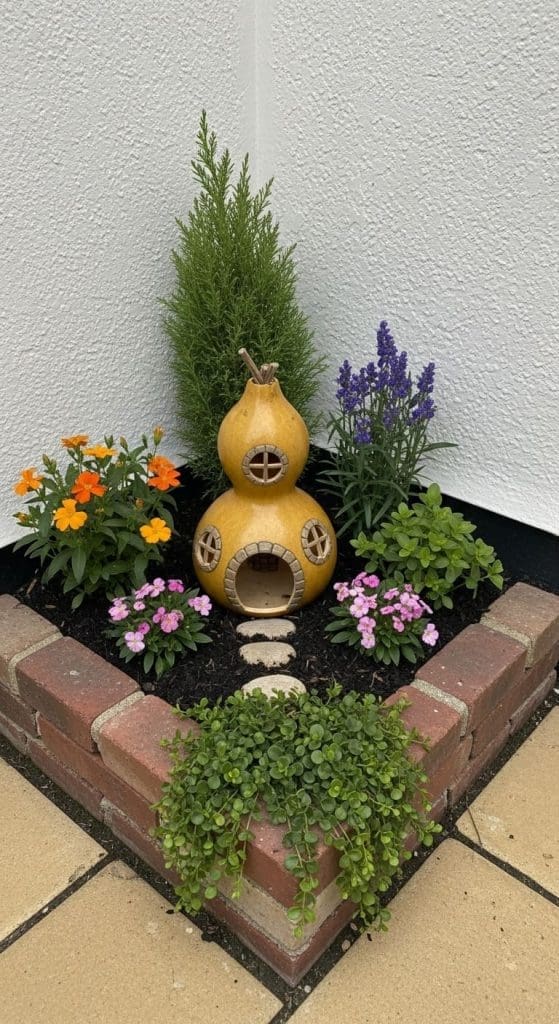
Why this works:
Dried gourds are hollow, lightweight, and naturally shaped like small domes, making them excellent for use as a fairy house shell. Once dried, they become tough and can withstand weather changes. Gourds also provide an organic base that requires little cutting or forming, making this ideal for quick setups.
Materials:
- Small dried gourd
- Knife or drill
- Moss
- Twigs
- Bark or cork
Instructions:
- Cut an entry hole into the gourd.
- Clean out the inside thoroughly.
- Decorate the outside with moss and bark.
- Use twigs to create a small front door or steps.
- Add a cork or bark cap as a roof extension.
- Place the gourd upright in a shallow hole or on a stone.
11. Birch Bark Lantern House Fairy House DIY Ideas
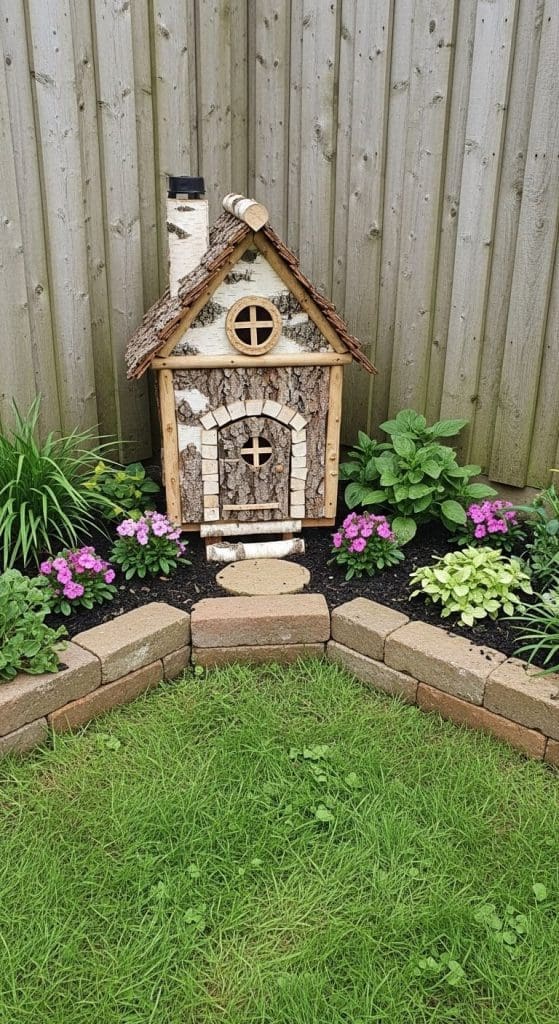
Why this works:
Birch bark is thin, flexible, and often naturally patterned, making it ideal for wrapping or layering. It is visually striking and easy to cut into shape. The light color also contrasts beautifully with darker materials like moss or stone. This idea doubles as décor and an educational activity on different tree barks.
Materials:
- Sheets of birch bark
- Thin twigs
- Small pebbles
- Natural twine
- Clay
Instructions:
- Roll birch bark into a cylinder to form walls.
- Use twigs and twine to create a frame inside the bark roll.
- Fill the bottom with pebbles for stability.
- Create a bark or twig roof and glue it to the top.
- Cut small square windows if desired.
- Place a small LED tea light inside (optional).
12. Coral and Shell Cottage
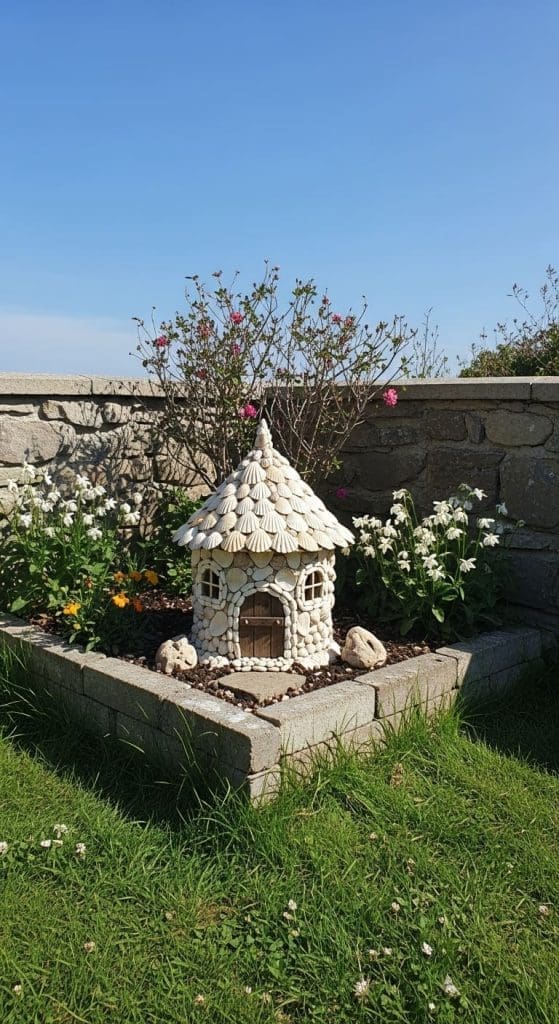
Why this works:
Beachcombed shells and coral offer a textured, coastal look perfect for seaside-themed fairy houses. Shells are durable, water-resistant, and naturally decorative. This idea promotes recycling marine materials and suits homes near the ocean or beach gardens.
Materials:
- Assorted shells
- Coral fragments
- Driftwood
- Sand
- Glue
Instructions:
- Arrange shells to form walls, gluing them side by side.
- Use coral pieces for corners or accents.
- Glue driftwood across the top as a roof beam.
- Cover the roof with flat shells or small stones.
- Decorate with sand and tiny shells around the base.
- Place on a driftwood board or flat rock.
13. Feather Roof Nest
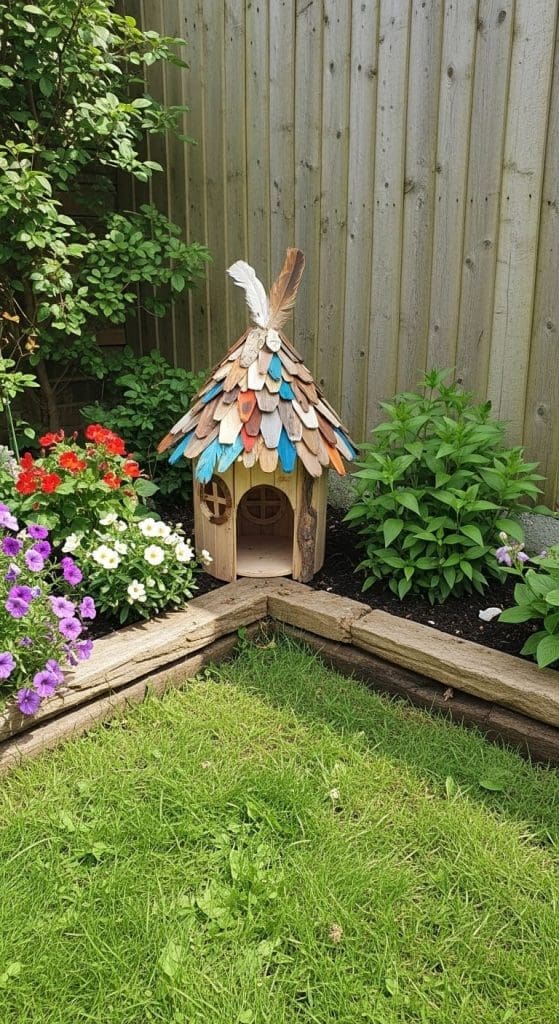
Why this works:
Feathers create a whimsical, airy look and are surprisingly weather-resistant when layered. They add movement and lightness to the structure, making the fairy house feel ethereal. Collecting fallen feathers can be part of a safe nature walk, encouraging observation and care for local wildlife.
Materials:
- Clean, fallen feathers or a colourful pack of feathers
- Twigs
- Bark base
- Natural glue
- Small pebbles
Instructions:
- Build a twig and bark house structure.
- Glue feathers in overlapping rows as roof shingles.
- Use small pebbles to weigh down the base.
- Add a twig arch over the entry.
- Place extra feathers as window awnings.
- Let dry fully before setting outside.
14. Bamboo Shoot Shelter

Why this works:
Bamboo is strong, naturally hollow, and resistant to weather, making it a reliable material for fairy houses. It offers a clean, structured look while still being 100 percent natural. Using bamboo supports longer-lasting builds and can be reused for multiple projects.
Materials:
- Hollow bamboo sections
- Bark
- Twine
- Pebbles
- Moss
Instructions:
- Cut bamboo into small, equal-length segments.
- Form a square or circle using the bamboo pieces.
- Tie them together with twine at each corner.
- Add bark sheets on top as roofing.
- Fill in the floor with pebbles.
- Line edges with moss for softness.
15. Dandelion Stem Tent
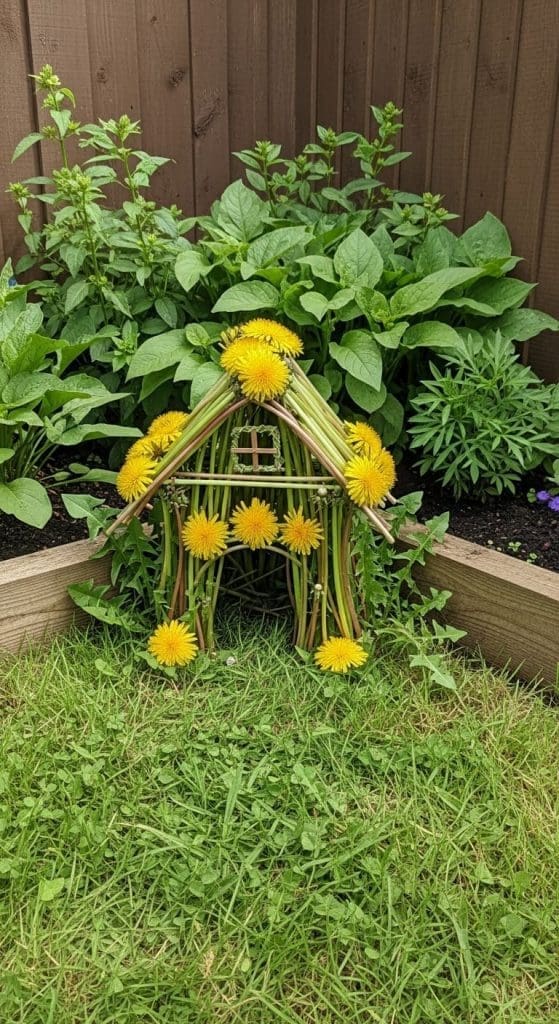
Why this works:
Dandelion stems dry quickly and retain a natural curve that works well for tent-like designs. This method teaches children how to work with delicate materials and encourages springtime exploration. The structure is best for short-term or indoor display use.
Materials:
- Dried dandelion stems
- Leaves
- Clay
- Small sticks
- Twine
Instructions:
- Gather and dry dandelion stems for flexibility.
- Form a tent frame with small sticks.
- Wrap dandelion stems over the top and secure with twine.
- Add leaves along the sides as shade.
- Use clay at the base for support.
- Place on a windowsill or garden planter.
16. Clay and Twig Oven House Fairy House DIY Idea
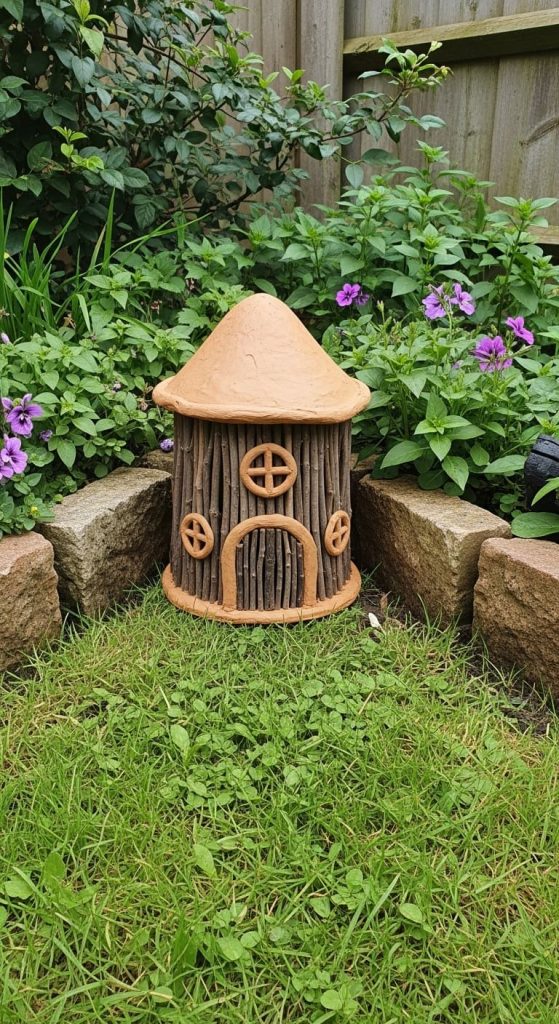
Why this works:
Natural clay binds well with twigs, creating a solid structure that mimics old-world cob ovens. It holds up well outdoors and can be molded into curved or flat shapes. This method is a great introduction to primitive building techniques using earth-based materials.
Materials:
- Natural clay
- Twigs
- Moss
- Bark
- Flat stone
Instructions:
- Form a clay base on a flat stone.
- Shape the clay into an igloo-style dome.
- Press twigs vertically into the clay walls.
- Leave a front opening for a door.
- Decorate with moss and bark on top.
- Let dry completely before use.
17. Sandstone Step Cottage Fairy House DIY Idea
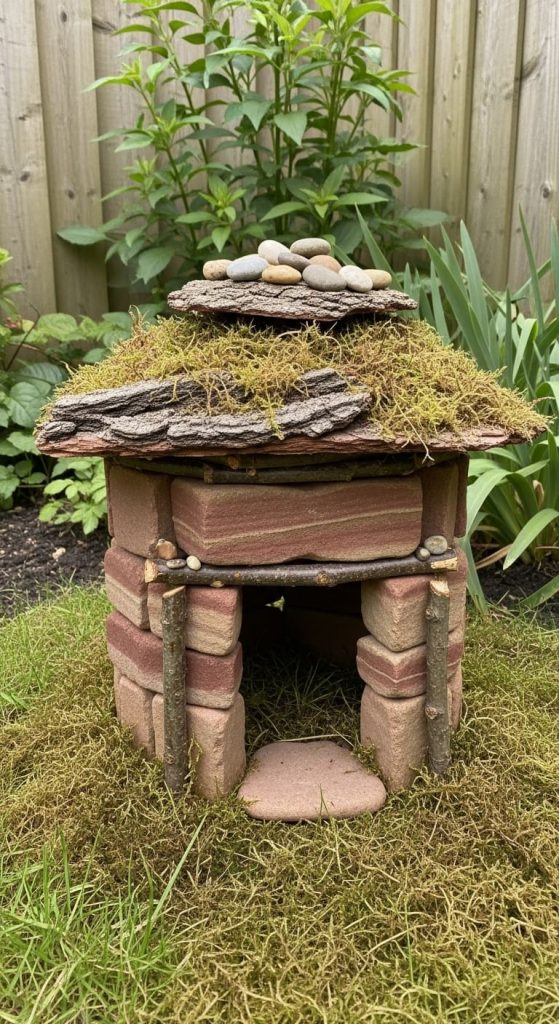
Why this works:
Sandstone is soft enough to carve and stack but firm enough to hold weight. It provides an earthy color and texture that fits into desert-style or dry garden fairy houses. This Fairy House DIY Idea supports stone artistry and teaches structural balance.
Materials:
- Small sandstone pieces
- Natural glue or clay
- Twigs
- Flat bark
- Pebbles
Instructions:
- Stack sandstone blocks in a square or circle.
- Use clay to secure each layer.
- Add twigs around the top for roof support.
- Place bark flat across the top as a roof.
- Decorate with pebbles or dry moss.
- Set in a sunny, dry garden spot.
18. Thistle Pod Hut Fairy House DIY Ideas

Why this works:
Dried thistle pods are spiky, unique, and naturally structured, making them excellent for adding character to small fairy dwellings. They are also lightweight and easy to handle, suitable for creating themed or fantasy-style builds. Collecting thistles encourages responsible plant harvesting.
Materials:
- Dried thistle pods
- Clay
- Twigs
- Moss
- Bark
Instructions:
- Trim and dry thistle pods for use.
- Mold a small clay base.
- Press thistle pods into the clay to form walls.
- Use bark and twigs for a small roof.
- Fill gaps with moss or bark flakes.
- Place the house inside a garden pot or stone ring.
19. Cedar Chip Lodge
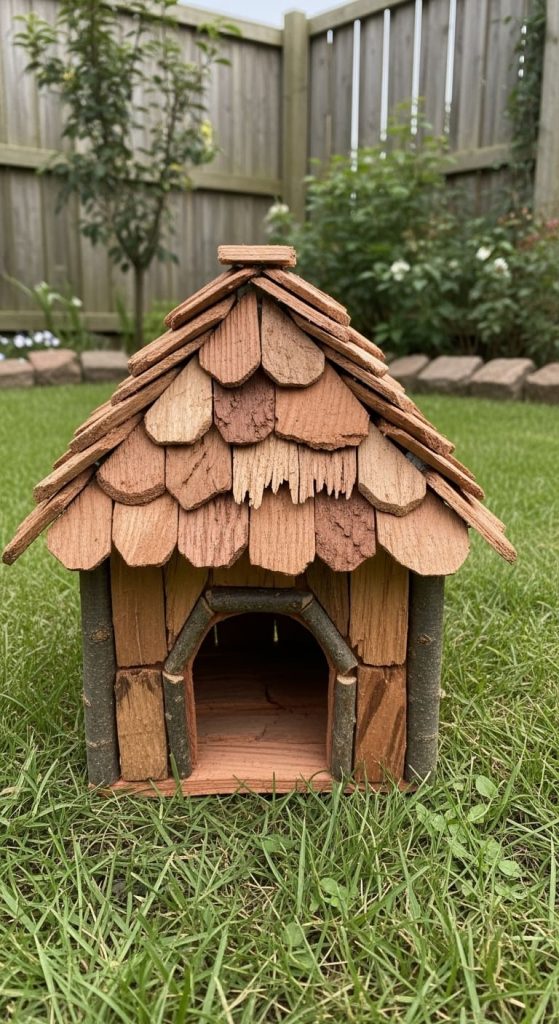
Why this works:
Cedar chips are aromatic, insect-repellent, and highly durable. They make an excellent choice for Fairy House DIY Ideas. Their reddish color adds visual warmth. This is a great use of leftover mulch material in a creative way.
Materials:
- Cedar wood chips
- Twigs
- Clay
- Moss
- Pebbles
Instructions:
- Press clay into a flat base.
- Arrange cedar chips in rows to form walls.
- Secure with more clay between chips.
- Add twig reinforcements at corners.
- Cover the roof with overlapping cedar pieces.
- Finish with moss around the edge.
20. Fern Roof Pavilion Fairy House DIY Ideas

Why this works:
Fern leaves are broad, textured, and lightweight, perfect for creating a green canopy over a miniature house. They dry well when layered and provide a magical, forest-themed look. This project highlights the versatility of foliage in DIY designs.
Materials:
- Fresh fern fronds
- Small twigs
- Bark slab
- Clay
- Natural string
Instructions:
- Build a frame using twigs and tie together with string.
- Lay the bark slab as a base.
- Drape fern fronds across the top and secure.
- Weave small twigs to form open walls or columns.
- Add clay around the base to anchor.
- Mist occasionally to keep ferns fresh.













